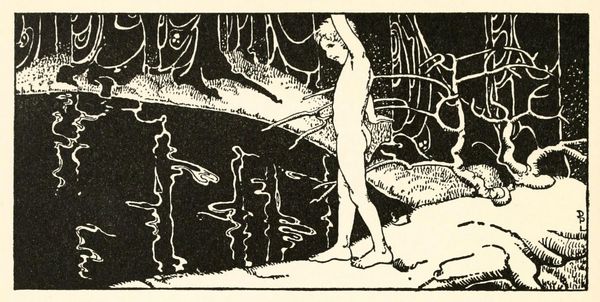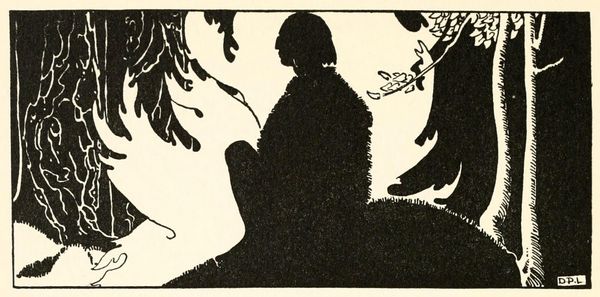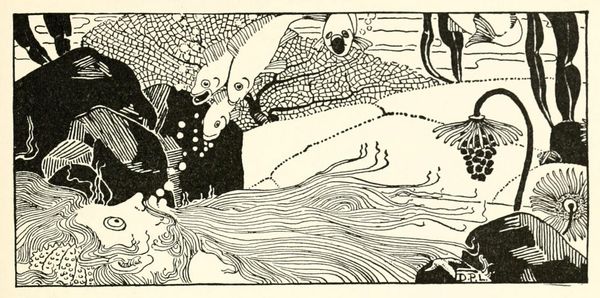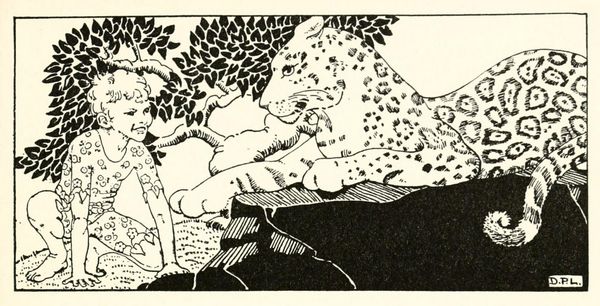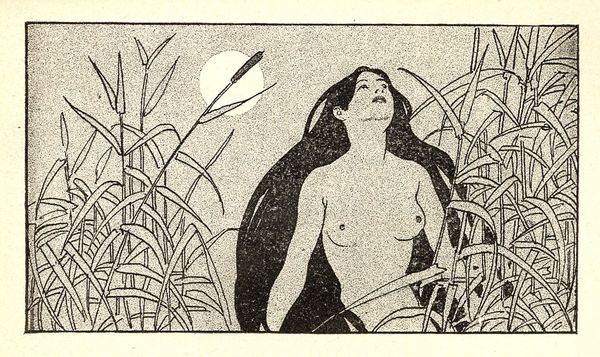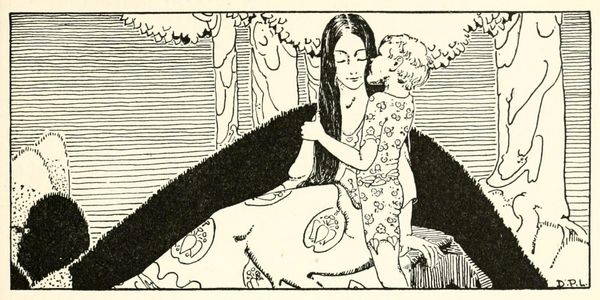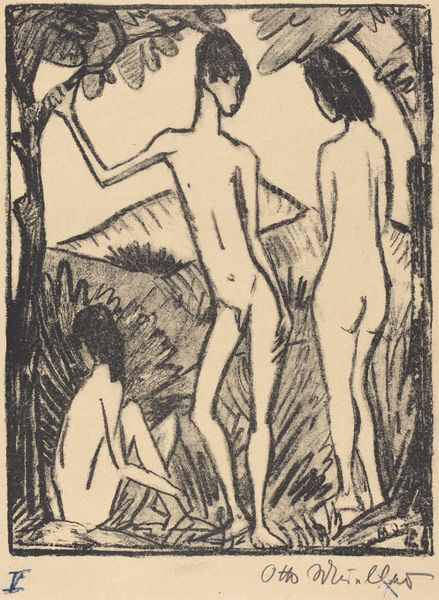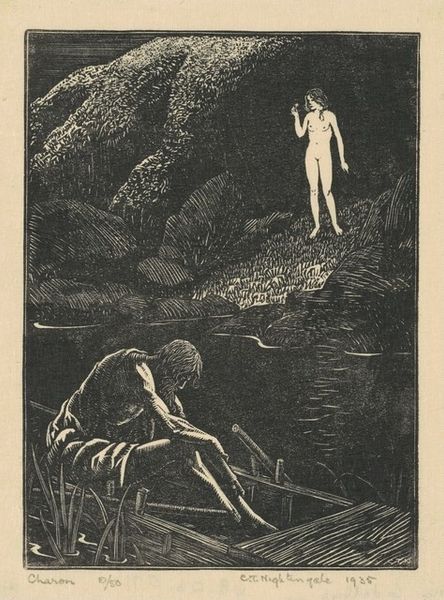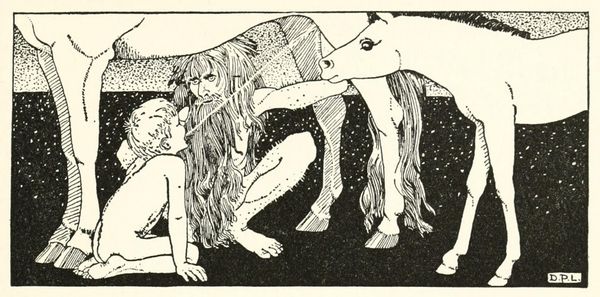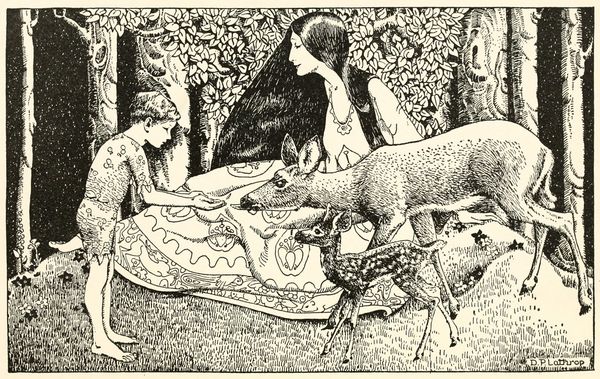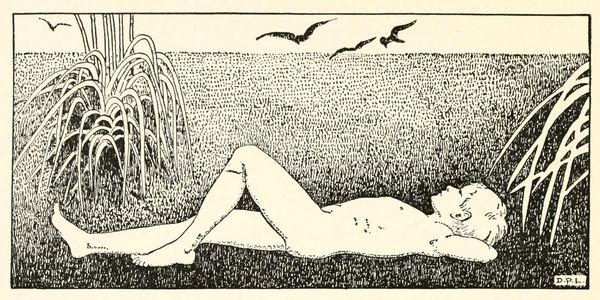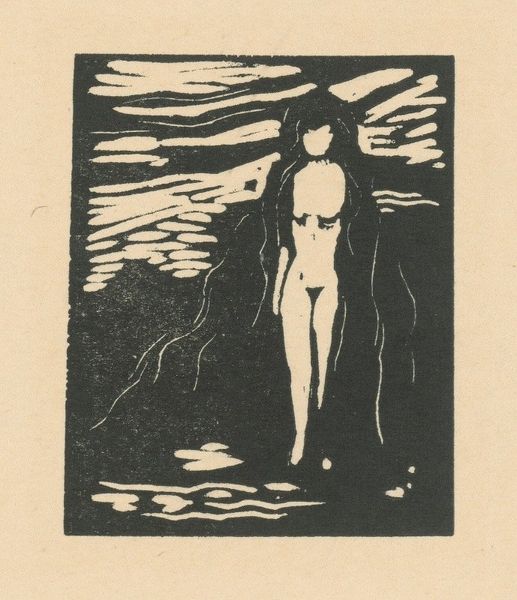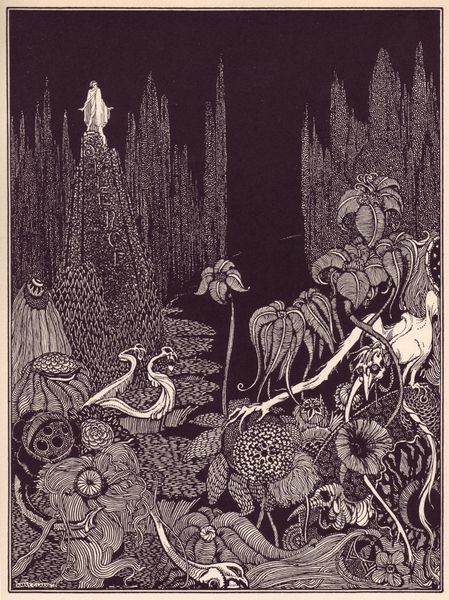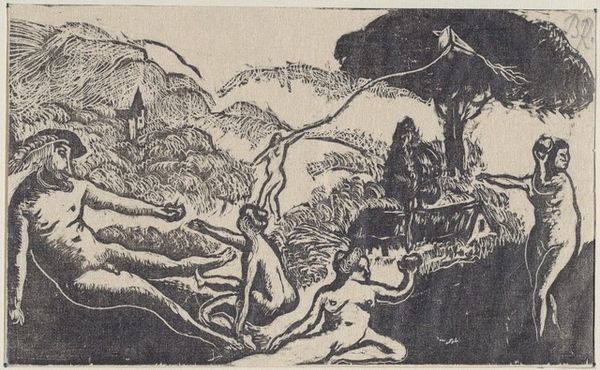
drawing, ink, pen
#
drawing
#
narrative-art
#
pen illustration
#
line drawing illustration
#
landscape
#
fantasy-art
#
figuration
#
ink line art
#
ink
#
symbolism
#
pen
Copyright: Public domain US
Curator: Ah, "A Little Boy Lost," created in 1920 by Dorothy Lathrop. This captivating work is primarily made using ink and pen, a striking combination that yields stark contrasts and detailed textures. What’s your initial take? Editor: The density of the black ink almost swallows the boy whole! He's this tiny, vulnerable figure against a very overpowering forest. Gives me a sense of claustrophobia. Curator: Precisely! The starkness evokes isolation, don't you think? I always imagine this little fellow yearning for connection. Lathrop has composed the landscape in such a way as to have the foliage both shelter and entrap him, he's small against its scale and he is gazing up at what I would interpret as a very wise owl. What secrets does she hold I wonder? Editor: And thinking about Lathrop, right? This isn't just about childlike wonder. What materials did she have at her disposal? Pen and ink meant something different in 1920 than they do now – mass production was changing access, but craft traditions were also very much alive. Was this a cheap reproduction technique? Was she able to make art for all to view? Curator: Intriguing! Lathrop also moved within illustration and fine art circles so to address her work simply from an economic perspective might dismiss her desire to express pure imagination, however affordable her choice of media! It almost becomes an ode to simple methods of production. Do you agree? I think we get a sense of fantasy in every stroke, a fairytale unfolding right before our eyes. The crisp lines, that incredible use of shadow. Editor: Yes, the detail for a drawing! Looking at it from my perspective however, I'm also thinking about what kind of labour went into this precise linework. The social position, class of her patron might have influenced it or the simple access she had to quality drawing paper. And I keep circling back to the reproduction – who got to see it, how widely was it distributed, that all factors into its cultural impact. Curator: These practical considerations offer a deeper understanding of the creative act itself. The dialogue between the emotional depth and the means of making reveals how human ingenuity has adapted over the centuries. Editor: Absolutely, and recognizing the inherent value of all of these aspects provides such a holistic appreciation.
Comments
No comments
Be the first to comment and join the conversation on the ultimate creative platform.
